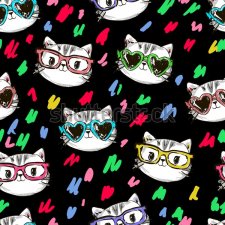3 0.00% 3 0.00%. 3 0.00% 3 0.00%. 3 0.00% 1 0.00% 1 0.00% 1. -banka-nacali-obslyjivat_-karti-platejnoi-sistemi-mir-22002016/ 2019-02-23. Novii-kontakt-centr-i-povisil-kacestvo-raboti-goracei-linii-14002017/ 2019-02-23.
Brothers conflict otome game english download full. We approve newly submitted descriptions every day and you will find that it will not take long for your description to appear in this space. It would be really great if you could please submit a description for this title as that makes emuparadise.org a more complete resource for other visitors. You can help us out by submitting a description for this title. Chances are, that since you are here, you must have either played or are going to play this game.

• • • A kartika ( kartri, katari; gri-gug, or kartrika in Nepal, also sometimes referred to in Tibetan as a trigug or drigug) is a small, crescent-shaped hand-held flaying knife used in the ceremonies of. The kartika is said to be 'one of the quintessential attributes of the.'
It is commonly known as the 'knife of the.' While the kartika is normally held in the right hand of a in Vajrayana iconography and spiritual practice, occasionally it can be seen being held by esoteric male deities, such as certain forms of. It is also found frequently in the iconography of the spiritual practice of.
Quartz Kartika on display at, 18-19th century Iconography [ ] In terms of iconography, The 's knife has a flat sharpened blue iron blade with a curved hook at its outer extremity, which enables the flaying activities of cutting, scraping, and pulling. Its faceted or eight-sided handle is attached to the upper edge of the blade by either a leaf-shaped golden mount or the wide-open mouth of a golden, and the handle's top is sealed by a half-. The same way that the and are usually paired ritual items in spiritual practice and iconography (one is held in the right hand and the other simultaneously held in the left), the kartika usually appears as a pair with the or 'skull-cup'.
The shape of the kartika, or trigug, with its crescent shape and the hook on the end, is derived from the shape of a traditional shape of the butcher's knife. Depictions of typically contain the kartika as one of her attributes. In the iconography of the enlightened and tantric female, it is common to find the hooked kartika knife in her right hand and the in her left, representing 'the inseparable union of and.' Meanings [ ]. This section needs expansion with: examples and additional citations. You can help. ( May 2016) As one author writes about the meaning of the kartika: The traditional interpretation of the hook in Tibetan Buddhist imagery is that of the hook of compassion.
If you were an SEOer or online marketer, the data on the analysis of the keyword ' Patara Bavshvebis Tynauri' would be very helpful. Rusi bavshvebis gaupatiureba in real life.
It is the hook which pulls beings out of the cycles of transmigration. The hooked crescent-shaped knife of the dakini with its vajra handle pulls one forth from suffering, chops up the ego-centred self and is guided by the diamond clarity of the vajra.
The kartika is used to symbolize the severance of all material and worldly bonds and is often crowned with a, which is said to destroy ignorance, and thus leading to. Another more nuanced interpretation says that 'the kartika represents the severing of the two obscurations of defilements ( avarana) and knowledge ( jneya avarana) that obstruct the path of enlightenment.' The kartika is also used to cut through human obscurations to progress on the spiritual path including 'pride, lack of belief, lack of devotion, distraction, inattention, and boredom.'